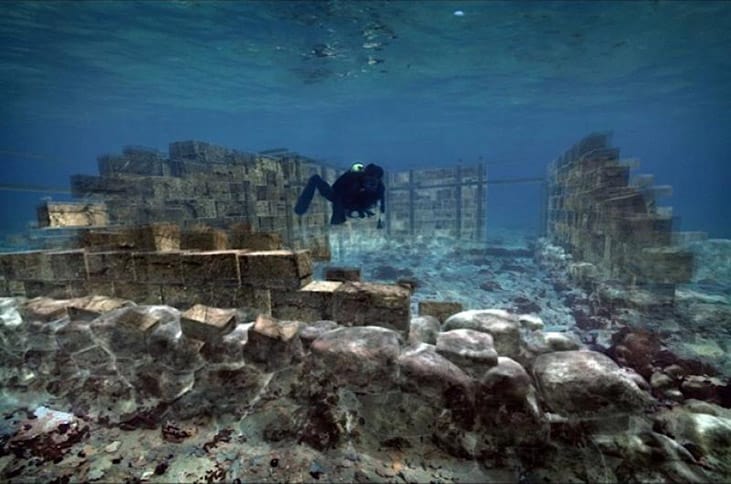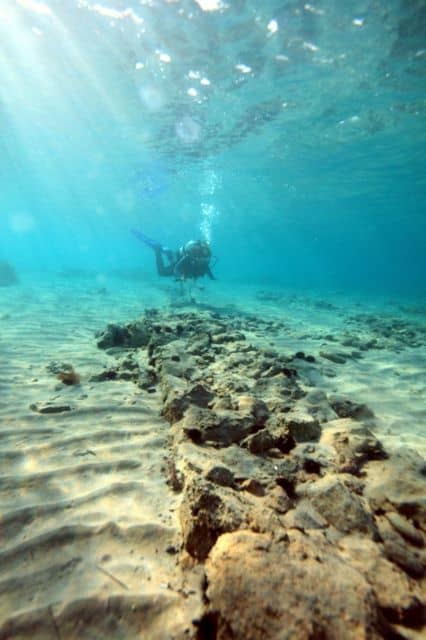

Discovered in 1967 by Nicholas Flemming and mapped in 1968 by a team of archaeologists from Cambridge, Pavlopetri (Παυλοπέτρι) is located between the islet of Pavlopetri and the Pounta coast of Laconia on the Peloponnese peninsula.


Pavlopetri, which literally translates to ”Paul’s Stone,” is one of the oldest submerged cities, as well as the oldest in the Mediterranean Sea.


The settlement contains Neolithic and Bronze Age material, and it is believed to have flourished between 3000 and 1000 BC.
“There is now no doubt that this is the oldest submerged town in the world,” Dr Jon Henderson, associate professor of underwater archaeology at the University of Nottingham, said in 2009.
“It has remains dating from 2800 to 1200 BC, long before the glory days of classical Greece. There are older sunken sites in the world but none can be considered to be planned towns such as this, which is why it is unique.”
Marine geologists have yet to determine why the settlement sank. Theories include sea level changes and ground subsidence caused by earthquakes or tsunamis.
“It is very likely a combination of the first two,” Dimitris Sakellariou, at the Greek Institute of Oceanography, said.
“As the world’s oldest submerged city, it is truly amazing. It not only shows how people lived at the time but is also of great interest to natural scientists because the waters around it are so shallow.”
Aided by digital technology, archaeologists discovered a world of buildings, courtyards, main streets, rock-cut tombs and religious structures.
It is also believed that the town was the centre of a thriving textile industry (from the many loom weights found in the site).
In 2009, an international team of experts from the Ephorate of Underwater Antiquities of the Hellenic Ministry of Culture, the Hellenic Centre for Maritime Research, and the University of Nottingham began a five-year project to excavate and explore the town in detail.
During their survey, the team discovered a further 9,000 square metres (97,000 square feet) of new buildings, including a large rectangular hall and structures that lined a previously hidden street.
The underwater ruins of Pavlopetri are an example of underwater cultural heritage that could benefit from the protection of the 2001 UNESCO Convention on the Protection of the Underwater Cultural Heritage
Riyadh – April 2, 2025—Saudi Arabia’s national airline, Saudia, announced in a press release that…
LP 8.1 was first detected in July 2024 and is now the third most prevalent…
Apple Watch cellular plans have launched in Greece, with Cosmote offering eSIM activation for the…
The Archbishop of Cyprus, Georgios, lambasted Cypriot MEP Feidias Panayiotou, accusing him of acting as…
Peter Mamouzelos, South Sydney Rabbitohs hooker, shares his dream of playing rugby league in Greece,…
Cyprus remains divided since Turkey’s 1974 invasion, and while recent UN-hosted talks between Greek and…